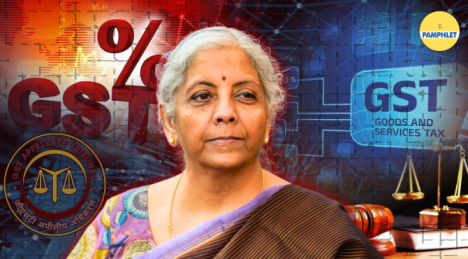The GST next-generation reforms, which came into effect on Monday, September 22, 2025, promise significant relief for consumers and businesses alike. Households can expect an average 13% saving on monthly grocery and daily essential bills, while a small car buyer could save nearly ₹70,000 thanks to reduced tax slabs. These direct benefits ease the financial burden on families, but the deeper and more structural reform lies in the creation of the Goods and Services Tax Appellate Tribunal (GSTAT).
Before GSTAT: A maze of confusion
For years, India’s tax dispute system was fragmented and chaotic. Disputes often ended up in multiple forums:
- At the central level, businesses faced the Customs, Excise and Service Tax Appellate Tribunal (CESTAT).
- At the state level, they dealt with different VAT Tribunals.
A single works contract—for construction or software installation—could be split into goods and services. The Centre might push for higher service tax in one forum, while a state demanded more VAT in another. The same transaction became the subject of parallel litigation, draining businesses of time and money.
This lack of uniformity created contradictions across states. A ruling in Maharashtra carried no weight in Karnataka. Companies with multi-state operations faced unpredictable outcomes, making long-term planning and investment risky. Capital remained locked in disputes for years, and for many MSMEs, fighting in two or three tribunals was simply unsustainable.
The result was what many called “tax terrorism”—a combination of complex laws, conflicting rulings, and wide discretionary powers that stifled entrepreneurship and discouraged compliance.
With GSTAT: one nation, one forum
The launch of GSTAT marks a decisive shift. Announced in September 2025, it brings all GST-related disputes under a single nationwide system.
- Uniform structure: A Principal Bench in New Delhi and 31 State Benches across 45 locations.
- Scale: With over 116 members, GSTAT will be India’s largest tribunal, addressing an initial backlog of over 400,000 cases.
- Speed: About 90% of appeals—cases involving claims below ₹50 lakh—will be resolved by single-member benches.
- Digital-first: Through the GSTAT e-Courts Portal, taxpayers can file appeals online, track cases, and attend virtual hearings. Orders will be published digitally, ensuring transparency and accessibility.
Why it matters
The new system changes both perception and reality:
- For MSMEs and startups, faster dispute resolution means smoother cash flow and increased survival.
- For investors: Consistency across states reduces uncertainty and strengthens confidence.
- For ordinary taxpayers: It signals a move towards fairness—taxation is no longer about endless harassment, but about predictable justice.
GST 2.0: A two-track reform
Taken together, the GST rate reductions and the creation of GSTAT define the Modi government’s GST 2.0 agenda. One part eases household and consumer expenses, the other restructures the dispute resolution mechanism. Both push towards the same goal: making GST simpler, fairer, and more trusted.









